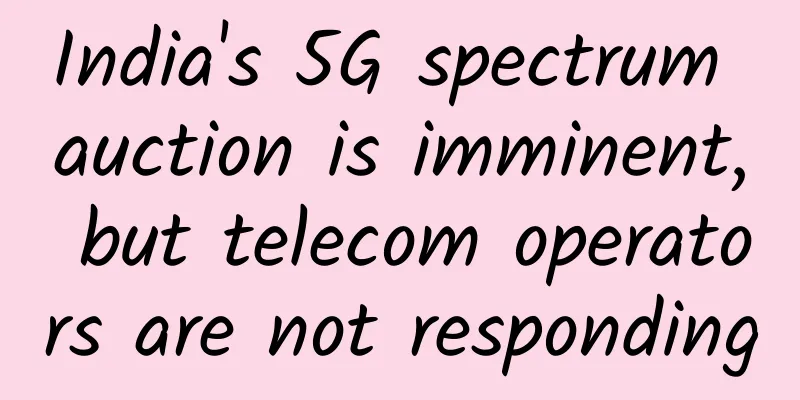Why are drones the first choice for 5G commercial use? The reasons are based on these three points!

|
In recent years, drones have become more and more common in our lives. From the military field at the beginning to the consumer field and now to the industrial field, drones are becoming more and more common. The rapid development of the drone industry and the continuous growth of the drone industry have also created an increasingly strong demand for mobile communications. In this context, it is generally believed that drones are the preferred industry for 5G commercial use.
Since June 2019, my country's 5G has officially started commercial use. Entering 2020, with the proposal of new infrastructure, the acceleration of 5G construction, and the introduction of relevant 5G planning policies in major provinces and cities, my country's 5G commercial use has not only been officially put on the agenda, but has also gradually entered the fast lane. So, what can 5G bring to the development of drones? Why are drones the first choice for the commercialization of 5G? 5G accelerates the transformation of the drone market Because first of all, 5G has accelerated the development of the drone industry, which is already in a period of transformation. As we all know, after expanding from military applications, drones have opened the door to consumer and industrial applications. At present, the application of drones in the consumer level has basically taken shape, and the market is monopolized by DJI. The development has begun to show a sluggish and sluggish state, and the attraction to market capital is getting smaller and smaller. Against this background, industrial applications are on the contrary in the spotlight. Whether it is logistics, security, inspection, or plant protection, current industry-level drones are increasingly favored by capital and are developing rapidly. According to authoritative data, in 2025, of the total size of my country's 75 billion drone market, agricultural and forestry plant protection applications will account for 1/4, security applications will account for 1/5, and power inspection will account for 1/15, which together far exceeds consumer applications such as entertainment aerial photography. However, during this market transformation, drones have also encountered many problems. Among them, the emergence of network problems has become the key to restricting their development. The reason is that 4G networks have serious deficiencies in bandwidth, latency, and interference coordination. Based on this, the emergence of 5G technology can well make up for the shortcomings of 4G and accelerate the transformation and development of the drone market. Compared with traditional 4G networks, 5G has the advantages of high speed, low latency, and large capacity. At the same time, the base stations are more numerous and denser, and the network coverage is more comprehensive and complete. Therefore, 5G can enable drones to break through the limitations of the 4G era and make the application of drones in the industrial field more efficient, stable, and safe. At the same time, the transformation will be more powerful and natural. 5G networks enhance drone safety Secondly, 5G can solve the long-standing safety issues of drones and reduce regulatory pressure. For a long time, drones have been criticized for their high prices and numerous safety issues. In particular, news about "illegal flights and disrupting flights" has been heard everywhere, both at home and abroad. In addition, issues such as drone crashes and injuries, drones stealing privacy, and drone illegal transportation have also made people very worried. To solve the above problems, my country has recently issued a number of policies and regulations to build a legal fence for drones, strengthen supervision, and take effective measures such as establishing a real-name system and demarcating no-fly zones. However, despite this, the pressure of prevention and control and supervision is still not small. In this context, the emergence of 5G technology can undoubtedly bring good news. On the one hand, with its own technical characteristics, 5G can reduce the signal interference to drones, and greatly improve the latency and accuracy of data transmission, which can effectively ensure the flight safety of drones. On the other hand, the perfect control network built by 5G can also make drone supervision more comprehensive and effective. In short, 5G technology can not only be used to control drones themselves, making their flights safer, but it can also be applied to regulatory links and scenarios, using technology to improve the breadth and intensity of drone regulation. From these two aspects, 5G has brought about an all-round improvement in drone flights and applications. 5G unlocks more new scenarios and applications Finally, 5G also adds more possibilities for the application of drones, making the scenarios more diverse. From the introduction of the first point above, we already know that 5G can accelerate the transformation of drones from consumer-grade to industrial-grade applications, which shows that the emergence of 5G technology can further sublimate and deepen traditional applications. But in addition, the 5G era can also bring more new ways to play with drones, making drone applications more diverse and varied. For example, with the help of 5G's high speed and low latency, videos can be made clearer and more synchronized, making remote video possible. Based on this, drones can achieve VR live broadcasts by loading VR equipment with the support of 5G, which will be an upgrade for future entertainment aerial photography and inspection industries. For example, with the help of 5G's wider and more complete network, the flight distance of drones will be further extended. In this regard, it can be used in a variety of industries such as logistics, inspection, field survey, emergency rescue, etc., making the application and value of drones in these fields more exploratory and possible. In short, 5G not only deepens mainstream applications, but also plays a significant role in upgrading the functions of drones and promoting the development and growth of some niche applications, and even spawning many new applications. Last year, local operators in my country have been exploring and trying more possibilities in the application of 5G drones. Under this trend, the future is worth looking forward to. |
>>: Building the future: How ICT can help develop livable cities
Recommend
F5 helps Cegedim accelerate the digitalization of healthcare by ensuring data security and promoting DevOps applications
Today, digital transformation has become a global...
spinservers National Day promotion: 1Gbps unlimited traffic server from $99/month, 10Gbps unlimited traffic server from $599/month
spinservers is offering promotions for the Chines...
Virtono: 25% off San Jose VPS starting at 2.2 Euros per month, free double memory
Virtono is a foreign VPS hosting company founded ...
Let's talk about network programming
Introduction 【1】Network programming: Computers di...
Can operators make money without doing anything?
[[342624]] This article is reprinted from the WeC...
In the era of cloud computing, what issues should data center operation and maintenance pay attention to?
In the era of cloud computing, IT system construc...
Before becoming a "hacker", you must master the "network protocol port"
In the previous article, we gave a detailed descr...
5G carbon emissions will triple by 2035, requiring an accelerated transition to 100% renewable energy
On May 28, the Metrology and Testing Center of th...
Rethinking the future of 5G through the lens of extended reality (XR)
5G technology is developing globally, and Singapo...
[Black Friday] DediPath VPS Hosting 50% Off, 1Gbps Unlimited Dedicated Server Starting at $45/month
DediPath is a foreign VPS service provider founde...
CMIVPS: Hong Kong high-bandwidth VPS hosting, 20% off for monthly payment, 30% off for half-year payment, direct line 5-100Mbps bandwidth
CMIVPS is a foreign hosting service provider esta...
Why is “open source” so important to the Internet of Things?
For the development of the Internet of Things, &q...
Phicomm N1 (Tiantian Chain) flash YYF voice version
More than 2 years ago, I recorded the process of ...
One year later, let’s talk about Open RAN again
[[385310]] This article is reprinted from the WeC...
[Black Friday] Hostons: 25% off VPS/VDS starting from $12/year, free double hard disk + double monthly traffic @10Gbps, multiple data centers in Los Angeles/Salt Lake City, etc.
Hosteons has also had frequent promotions in the ...




![[Black Friday] TMThosting: 30% off monthly payment for Seattle high-security VPS, 10% off for dedicated servers, supports Alipay](/upload/images/67cac02248693.webp)




